Chapter Three of BirthQuake
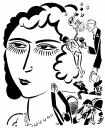
"The most painful and difficult part of being middle-aged is that old age and dying are no longer ridiculous abstractions." - Eda Le Shan
As baby boomers progress into middle age, many of us find ourselves struggling with the hard to deny fact that we're not kids anymore. Charles Spezzano in his book, "What To Do Between Birth And Death: The Art of Growing Up," observed: "Most people over twenty-five look like grown-ups--at least on the surface. Most people over the age of twenty-five feel like teenagers inside. This confuses a lot of people."In our case, twenty-five has given way to thirty, forty, and fifty, and yet a significant number of us still feel like teens. What makes growing older particularly difficult for my generation is quite likely the environment in which we came of age. Gail Sheehy reports in "New Passages: Mapping Your Life Across Time," that those born between the ages of 1946 and 1956 experienced the benefits of having had the most privileged and extended period of adolescence of any other generation in history. Those of us born between the years 1956 and 1965, hold the dubious honor of being part of that distinctive class of Americans labeled, "The Me Generation." We are said to have wanted everything: fame, fortune, adventure; and we expected it now! Our images of middle age consisted of such goodies as thickening waistlines, dentures, and wrinkles. We heard, "Never trust anyone over thirty" and "What a drag it is getting old." We, the Boomers, were the ones who counted - the ones with the greatest promise. We were going to usher in the "Brave New World." Is it any wonder that Sheehy quipped, "Who can embrace the larger meaning of life beyond youth when the most important thing in the world is still me?"
continue story below
We were not prepared to become middle aged. Even the term was somehow offensive. We were the largest, the loudest, and the toughest. We were first in all kinds of categories, so how could we possibly be downgraded to the middle? Entering mid-life with the losses we perceived this stage to entail has a lot of us more then a little disoriented. Confronted with aching backs, bad knees, expensive dental work, new rules, new roles, and the dawning awareness that we too are really going to die has left us just a little bit shaken to say the least.
We, who at one time thought we had most of the answers and were very willing to share them, are now discovering more and more questions. And while we've generally become more sensitive to the needs and pain of others, we must also acknowledge that we're not as gifted as we perhaps once thought we were at handling the heartache of others, and even less skilled in dealing with our own.
Often we attempt to talk those we care about out of their painful feelings. If, on the other hand, it's we who are suffering, we tend to focus on the unfortunate aspects of our difficult situations, rather than acknowledge the opportunity those troublesome circumstances or feelings may present. We've generally only given lip service to that tired old cliche about making lemons into lemonade. We've never been particularly good at it anyway. We've been graced with a multitude of choices and a significant amount of control over much of our lives for so long that we've come to see these gifts as entitlements. And while Midlife offers tremendous benefits, it also confronts us with new and unsettling limits and losses that will inevitably (if they haven't already) cause us to experience some degree of suffering. Because suffering is unavoidable, (not because it's good for you) it becomes increasingly important to begin to come to terms with it.
THE STRENGTHENING...
"Those things that hurt, instruct." - Benjamin Franklin
When my daughter was around two years old, and seemingly in perpetual motion whenever her eyes were open, I came down with a very bad case of the flu. My husband was out of town. We had recently moved to the area, so I hadn't yet established a support system, and my family lived five hours away. I was on my own. I could barely move without the room spinning, or needing to vomit. In spite of her mother's incapacitation, my little girl's demands remained constant and her needs immediate. I knew I definitely wasn't equal to the task, and I was also aware that I had no choice but to do what I didn't believe I could do. I was miserable and felt more than a little self-pity. On the afternoon of the second day of my ordeal, a woman I hardly knew called regarding a meeting I was to attend the following week. She noticed that my voice was weak and shaky and asked with concern if I was all right. I told her I was ill and alone with my daughter and having a tough time of it. Her sympathy was comforting, but it was a single comment she made that left the greatest impact. She said, "Things like this are strengthening." I didn't think that she was minimizing my situation, or that she was offering a quick cliche before abandoning me to my own devices. Instead, I felt that she understood, that she herself had been strengthened as a result of experiencing and coping with a difficulty, and that she truly believed that I would be too. I hung up the phone and painfully began to make lunch for my daughter, who was demanding that I pick her up and play our daily lunch game. Her cries grew louder and louder when I refused to comply, and my nausea seemed to increase with each raised decibel. I began repeating silently over and over, "This is strengthening!" "This is strengthening!" "This is strengthening!" While my body remained unmoved, my spirits gradually began to lift.
The next day while lying on the couch with my daughter, it occurred to me that this had been the first time we had simply lain together for most of the day, watching cartoons, telling stories, reading books, and snuggling. I chose to count the blessings of this experience, and to my surprise, I was able to identify more than I would have thought possible. I smiled for the first time in days as I acknowledged that I had indeed been strengthened.
"The giant oak is an acorn that held its ground." - Anonymous
In "Legacy of The Heart: The Spiritual Advantages of a Painful Childhood," Wayne Muller notes that those who've suffered in childhood, while bearing painful scars, invariably exhibit exceptional strengths; including remarkable insight, creativity, and a profound inner wisdom. He challenges such individuals not to perceive themselves as broken and damaged, nor to eliminate parts of themselves, but rather to strive to reawaken that which is wise, whole, and strong within them. In working with victims of childhood trauma, he observed that while still haunted by their past, they also develop an acute sensitivity to others as well as a tendency to seek beauty, love and peace.
" Seen through this lens, family sorrow is not only a painful wound to be endured, analyzed and treated. It may in fact become a seed that gives birth to our spiritual healing and awakening"
It's been my experience that this is often the case with survivors of childhood trauma. While not all such individuals that I've worked with possess the characteristics Muller so respectfully describes, I'm almost always struck by the strength and depth of these people. Each person has brought to therapy unique skills and abilities developed to a significant degree by the very pain they sought to escape.
Muller assures the reader that suffering and pain are not exceptions to the human condition. Instead, they are inevitable threads in the tapestry of life. He cautions not to become trapped by memories of childhood suffering, thus allowing the suffering to become the one thing that is the truest about our lives. He also points out that many of us would prefer to explain our hurt rather than feel it. He advises that we accept the pain we are given and identify the lessons it will inevitably teach if we only look and listen, particularly to the wisdom contained within the depths of our own souls.
continue story below
"The Japanese poet Kenji Miyazawa left us a powerful image of dealing with pain when he said that we must embrace pain and burn it as a fuel for our journey." Matthew Fox
While I don't under any circumstances wish to minimize the pain of another, nor suggest that he or she be grateful for suffering, I do believe that in order to empower another, it's important that the value of all experiences in a person's life be acknowledged. While there are many experiences I would have adamantly refused to struggle with in my own life had I been given the choice, to deny the value of the message in spite of how painful the lesson or unwelcome the messenger, only serves to add insult to injury. If one has no choice but to toil on a particular path, at the very least - claim every available compensation along the way.
"Some part of our being longs to join a small band of our brothers and sisters on a daring and intrepid quest." - Carl Sagan
My friend Victoria phoned the other night. Our friendship has spanned over 15 years, and now since I've moved to South Carolina must reach over a thousand miles. I miss her. She's consistently provided me with comfort and inspiration, and I've long admired her commitment to live her values. What she believes in - is what she acts on. She calmly witnessed and supported Kevin and myself during our difficult period of transition. It appears that she now may be entering her own. I attempt to reassure her over the telephone. I share with her that while the period before we moved away was difficult, I seriously doubted we would have mobilized ourselves to make the necessary changes in our lives without the pain. It's so often easier to remain in a familiar rut than to leave its security and venture out into the unknown.
"New Life comes from decay, from what is undesirable, from a 'stench.'"
- Janice Brewi and Anne Brennan
Suffering has often proven to be a catalyst for growth in my own life. In an attempt to avoid dealing with my childhood agonies, I turned to reading as an escape. It was my discontentment and a desire to flee poverty that prompted me to attend my first college class. Later, it was only after my husband and I had separated for nine months, that I braved Graduate School. Because I myself had experienced despair, I was able to understand and assist others in dealing with their own. It was the numerous mistakes and contradictions in my own character which helped me not to judge the failings of another. The more often I fell, the less likely I was to look down upon someone else who had lost his or her balance. And it was only after surviving again and again the disappointments in my life that I came to understand that it's in each of our nature's to recover. Healing is a natural process.
THE WISDOM BORN OF PAIN
"Wisdom is oft times nearer when we stoop than when we soar." - William Wadsworth
From time to time, Kevin reminds me that when he first met me at the age of 15, in an attempt to engage me in conversation, he asked me what I wanted to be when I grew older. I informed him that my goal was to become wise. He was dumbfounded. "Who was this person and who on earth had as a life long dream to become wise?" he wondered. I did. I still do, and I'm certain that it's been the "wisdom born of pain" that has carried me the farthest in my pursuit of this goal.
The presence of pain saves lives. When my mother was a child, she was playing too close to an open flame. It wasn't until she felt the first stab of pain that she realized that her dress was on fire and cried for help. Had her body failed to register this sensation, she would have quickly become a human torch. Pain tells us when we're in trouble, and hopefully, will keep getting our attention until we do what we need to do to save ourselves.
I'm good at suffering. I think I do it more blatantly than many people I know. I was reading a story to my daughter one morning about a dog named Murphy who died. I began to cry and continued to weep while I read the rest of the book. My daughter thinks I'm strange. It isn't the first time I've burst into tears while reading or watching a movie with her. I was a wreck when she and I saw "The Land Before Time" together. The suffering of others, even some cartoon characters, has always touched me deeply. I remember a blind man who sat outside of Shaws grocery store playing an accordion for donations. Shoppers walked by seemingly oblivious to him. My encounters with this man always left me shaken and profoundly sad. Seventeen years ago, while I was living in California, a white horse came running full speed ahead up to a fence by which I was standing. It startled me and I jumped back. The owner struck the horse in the face. I was enraged by his cruelty, and I cried in sympathy for the horse for days afterwards. I have often wondered how I managed to survive as a psychotherapist with such an acute sensitivity to pain. And then again, perhaps it is this sensitivity that contributed more to my success than any skill I acquired during my years of training.
"I feel her pain and my own pain comes into me, and my own pain grows large and I grasp this pain with my hands, and I open my mouth to this pain, I taste it, I know, and I know why she goes on." Susan Griffin
continue story below
I was trained to remain as objective as possible in my work with clients. Crying in their presence was definitely not considered to be of therapeutic value. For years I would watch people in terrible agony and not shed a tear. My throat would ache and my neck and chest muscles would tighten though. An ancient Chinese belief is that the neck mediates between the thinking mind and the feeling heart. Consequently, when there is difficulty with the neck area, this can often be linked to some kind of withholding or repression of emotional pain. During my early years as a therapist, I constantly had a stiff neck. Eventually, I said to hell with the cool and objective facade I had been taught to project. From time to time (though rarely), I began to permit my own tears to join those of my clients. I don't regret a single moment that I've wept with a client. Maybe it's a rationalization, but I believe that in showing my own pain, I help to validate the feelings of another. My tears are saying, "Yes, it's hard. You're right to cry. It hurts so much that I cry too." As I allowed myself to express my feelings more fully to my clients, the aching in my neck eased significantly.
While discussing compassion in her book, "Living With Chronic Illness", Cheri Register points out that the prefix "com" in Latin means "with". When we experience compassion for another, we feel "with" them and may thus according to Register, "transform a private and often lonely experience into one that is shared." I, personally, would rather be joined in my pain than be silently observed.
I remember being in a group in which a very reserved and private man began to weep. Later, he shared that he was extremely embarrassed by exposing his weakness to us. Joe Melnick, a warm and wonderful therapist who practices in Portland, Maine, turned to him and said, "I hate to cry alone. I always try to do it with someone, and preferably in groups."
I hate suffering, especially my own. I recognize that this may seem like a contradiction to what I have previously maintained regarding the value of suffering, but nevertheless, it's all true for me. I would banish all heartache from the earth if I could. But I can't. No one can. There will always be suffering. And while it can transform, it can also destroy. As a therapist, I've witnessed the destruction that suffering can yield more often than I care to remember. I have also watched strength and wisdom slowly evolve and emerge from the depths of despair. Those times I wish to never forget. Sometimes, the metamorphosis from tragedy to triumph is profound. Other times, discomfort may simply lead to a new insight. The smallest insights, however, can sometimes have a very large effect. One simple example of how this can occur may be found in Regina's story.
REGINA REVISITS
"There is in us something wiser then our head." - Schopenhauer
Regina had been referred to me by a former client several years ago for assistance in dealing with panic attacks. Her attacks involved shortness of breath, heart palpitations, dizziness, hot flashes, and tremendous fear that she was going to die. Regina had been a victim of violence as a child, and her abuse as well as her symptoms were addressed in treatment. Our work together had been successful, and I had not seen nor heard from her for at least three years.
When Regina re-contacted me, she informed me that she was beginning to experience anxiety again. While she was able to control her symptoms from developing into a full-blown anxiety attack, she was concerned by the frequency of their reoccurrence.
During our first visit, Regina informed me that she had recently married a wonderful man. They had moved into a spacious new home, and he had an adorable and loving eight- year-old son who visited every other weekend. As Regina continued to update me, it became apparent that her symptoms appeared most often on Friday nights just before her new stepson arrived and got worse as the weekend wore on. She explained that she enjoyed his visits very much and could not imagine why she was experiencing anxiety. She added that she loved her job and seldom dreaded returning on Monday mornings. Further discussion did not appear to render particularly helpful clues.
I decided to do some bodywork with Regina. I asked her to check in with her body and tell me what she was experiencing. With guidance, she was able to identify that her throat felt tight as well as her chest. I played soothing music, asked her to lie down, worked with her to progressively relax her muscles and then, with her permission, placed one hand gently over her chest and one on her throat. For several minutes I held my hands in place and instructed her to patiently wait for a message from her throat and chest. Tears eventually began sliding down her cheeks. She began to grimace and soon was sobbing. When she was able to speak, she informed me that she felt guilty. Her own son was now grown and off to college. She had given birth to him when she was just 16 and had struggled a great deal when he was growing up. She had never felt that she really bonded with him. Their relationship was polite but strained, and their contact was limited to brief telephone conversations and occasional visits. She had grown to love her stepson and felt guilty and sad that she was able to do with and for him what she had not been able to do for her own child. We explored the many complications in her life that she'd struggled with while her son was growing up, and acknowledged the tremendous ways in which she had grown over the years. I pointed out that while it was too late to enjoy her son's childhood, it was not too late to attempt to build a closer relationship with him, nor was it wrong to love and enjoy the new little boy in her life. In fact, I observed that in loving her stepson, she might learn how to express her love to her grown son more effectively. We then reviewed the skills she had learned during our previous work together, not only in symptom management, but also symptom prevention. She agreed to utilize these tools more often than she had during the past year. We scheduled our next appointment for one month later with the understanding that she could contact me for an earlier appointment if the need arose.
continue story below
Regina informed me during our next visit that she had really thought about what I said and remembered a book that she had read to her stepson some time ago. The book was written to a son from a mother and contained the message that no matter how much he drove her crazy or how old he got, she would always love him. She went out and purchased a copy for her grown son and included a heartfelt letter of love and apology to him. Shortly after she mailed them, she received a phone call from her only biological child. The two had a long and loving talk, and he agreed to meet her halfway the following Saturday between the college and her new home in order to spend the day together. After their meeting, Regina felt that she and her son had made significant progress in healing old wounds, and she felt connected to him once again. She also no longer felt guilty about her relationship with her stepson. Regina hadn't experienced her old anxiety symptoms in three weeks, and felt confident that she could deal with them again if or when they recurred. We didn't reschedule, as Regina understood that I was available should she need me in the future. Approximately six months later, I received a note in the mail from her stating that she was doing well and had not been troubled by anxiety since before our last meeting.
For Regina, as with most of us, there was a lesson in her pain. By looking at her anxiety and listening to what it might have to share with her, she was able to recognize feelings she had long repressed regarding her relationship with her son. In acknowledging and accepting her feelings of guilt and regret, she was then able to work toward reconciliation.
"Any major change needs a breakdown." - James Hillman
Whilechange can be a relatively logical, planned, and predictable process, it's all too often heralded by what sociologist Gordon Allport referred to as, "the power of the fait accompli." The power of the fait accompli asserts itself when an event occurs that is out of our control, such as a natural disaster, an illness, loss of a loved one, or loss of a job. Many of our own stories contain the angst of this phenomenon, and many of our stories also represent how pain can eventually lead to possibility. For instance, while reviewing the lives of devoted environmentalists, I noticed that agony often provided the impetus for action. Vice President Al Gore's intense search for "truth" and his deep devotion to environmental issues was deepened after witnessing his son get struck by a car. John Muir launched his career as a naturalist after recovering from an injury that left him temporally blinded and suicidal. Tom Hayden wrote, The Lost Gospel of the Earth as a result of the deep despair he felt on the twentieth anniversary of Earth Day, as he acknowledged that the planet's condition was deteriorating more rapidly than the rate of progress environmentalist were making to protect it.
Gabriele Rico was in serious trouble. Chronic anxiety, panic attacks and physical illness besieged her. Distracted by mothering, writing, teaching, and lecturing - she had successfully repressed much of her pain for years. Little by little however, her old coping techniques were beginning to fail her. The small rumblings of her quake began to build into an ominous roar, which refused to be silenced. Feeling increasingly anxious and overwhelmed, she retreated to a small cabin in the Sierras. The cabin was surrounded by Redwoods and overlooked a stream. It was a beautiful place to rest, to rejuvenate, and to gain much needed perspective. It was here - with no telephone or car, that Gabriele prepared to face her demons. And they came.
Her time in the cabin was often frightening and almost always painful at first. However, as she struggled to stay put, to look and listen and feel, she began to get in touch with the source of her fear and despair. In working through her agony, she utilized the tools of her trade. She wrote. And the more she wrote - the more she understood, and the more empowered she became. Her writing poured out of the deepest and darkest places of her soul during a time which she later described as: "my own terrible downward spiral into crisis." It was in coming to terms with her pain that the book:" Pain and Possibility," began to take shape, and so the wisdom born of Rico's pain is thankfully shared with the rest of us. Pain and Possibility is an outstanding guide that provides the reader with some of the most effective tools I am aware of, in utilizing the written word to discharge, process and work through pain. Rico writes:
"No one is immune to pain, but I know many who let pain fester and take charge of their lives. I know from my own experience that it is possible to discharge that pain and become recharged."
ANGER AS ANCHOR
"All suffering prepares the soul for vision." - Martin Bubar
continue story below
According to Buddhist teachings, the three primary causes of suffering in addition to attachment are anger, ignorance and greed. I once worked with a couple who came to me requesting that I help them fix their troubled relationship. The problem was that neither of them was willing to change their own behavior; each expected me to get the other to change. Not surprisingly, therapy failed, although the couple stayed together.
Years later the husband phoned my office and informed me that his wife was gravely ill and was not expected to live much longer. He told me that she had been asking to see me. I agreed to stop by their home, although I didn't look forward to our meeting, as my own issues regarding death were largely unresolved.
She reached out for my hand when I entered her room and began to cry. I embraced her, said a few words in greeting, and then we sat in silence. Eventually she began to talk. She spoke of many things; her children, her husband, her illness and her fear. I said very little in spite of the words of reassurance that wanted to come flooding out. She needed a compassionate witness, and so I restrained myself and listened loudly. There were many things she confided that day which I'll always remember. However, there was one observation in particular that I feel is important to share with you here. She told me that as she thought about her life, she realized that she'd spent a great deal of it being angry. While she continued to feel that she'd been treated unfairly by others, she had also decided that her anger had eaten away at her soul as malevolently as the cancer was now eating away her body. She deeply regretted all that she now felt had been sacrificed to her indignation. "If only I would have let go of all my resentments a long time ago," she lamented.
I never saw her again. Her husband contacted me approximately three weeks later and informed me that she had died peacefully at home. He calmly informed me of many of the details of her death and then began to cry. I asked him if he was all right, and he replied, "Tammie, do you know what she asked me to do that morning?" "What?" I gently asked. A voice filled with pain but also with what I believe was awe, replied, "She asked me to forgive her for always being so angry."
HOLDING ON
"It's never too late to complete our birth." - Stephen Levine
The Buddha also taught that the more one resists suffering, the more it intensifies. M. Scott Peck, in his best selling book, "The Road Less Traveled: A New Psychology of Love, Traditional Values and Spiritual Growth," maintained that it's the tendency to avoid problems and emotional suffering which is the primary cause of all mental illness. While I'm not certain that I agree with Peck entirely, I am struck by how true this seems in cases of alcoholism, workaholism, relationship addiction, gambling, etc. In fact, I've often been frustrated with how many women who are stuck in destructive relationships suffer day after day because they don't believe they can tolerate the pain involved in letting go of their dream that the loved one will someday change. Catherine was one such individual.
Catherine met her husband when she was fifteen. She married him four years later after breaking up and reuniting with him several times. When I met her, she looked older than her forty-four years. She was depressed, over weight and frightened. Her husband's drinking had escalated to the point where his job was in jeopardy. He had recently completed an inpatient treatment program to address his alcoholism; however, he had resumed drinking three months after his release from the program. He was becoming increasingly ill from the abuse of his body. He was using a great deal of sick time and once again his behavior was erratic, disruptive and abusive. Catherine's own physical health was deteriorating. Her blood pressure was alarmingly high, she had colitis, and experienced increasingly more severe bouts with migraines. While she worried that her husband's addiction to alcohol would kill him, I was concerned that her addiction to him might eventually destroy her.
For several years she had attempted to get him to change. She had participated in ALANON, had attended AA with him when she could get him to join her, and had been in couples counseling and individual counseling twice before. After twenty-five years of begging, ignoring, manipulating, cajoling and seducing - things were only worse. Her children, now grown, were unhappy and bitter. Her finances were precarious, her health poor, and her life seemed to her to be filled with disappointment and futility. She hated her husband, and yet she didn't feel that she could leave him. She had tried twice before only to return. "I couldn't stand it. It hurt so badly. I couldn't sleep or eat or think straight. I thought about him all of the time. It seemed as though I was damned if I left, damned if I stayed. I decided to stay. It was a lot less lonely." But was it? My experience has been that those in unhealthy and distancing relationships seemed to be the loneliest of people. When I shared this observation with her, she agreed that she had been terribly lonely for years, particularly since her children had left home. I informed Catherine that I could do nothing to help her with her husband, and that I would work with her only if she agreed that the focus of our work would be on her, not him. She accepted my condition of treatment.
Catherine's childhood story was similar to those of many other women who've found themselves feeling trapped in unhealthy relationships. She'd been an unhappy child, raised by a depressed mother and an abusive, alcoholic father. She had dreamed of the day that a handsome prince would carry her away, and they would finally live happily ever after. Tragically, her adult life had closely mirrored the life she had lived as a little girl. While the details had changed, she had remained depressed, disappointed, frightened, and still waiting for her happy ending. As a child she had relied upon a rich imagination to help her avoid dealing with her painful feelings. As an adult, she had focused on working on her husband's potential to someday become her prince. Just as when she was a child, it was only her fantasies that she had to hold onto.
Catherine didn't want to revisit her childhood, and I didn't blame her. It had been too painful then. It was too painful now. The closer we looked into her life, the greater our awareness became of how deep her pain was and always had been. It was far safer to worry about her husband than to feel her anger, her sadness, her emptiness, and her shame. Just when her depression threatened to deepen, her husband would rescue her by creating another crisis to which she would have to attend. And so it went. Catherine would peer over and into the deep well of her misery, and then she would run the other way in order to put out another fire that her husband had set. She would run around and around and around. Still, running, while exhausting, can be a lot less scary than standing still.
continue story below
And she suffered greatly on behalf of her man. "For God so loved the world that he gave his only begotten son." God had sacrificed greatly, and we worshipped him for it. Catherine would sacrifice, too, and perhaps someday her husband would acknowledge her self-denial and would beg for her forgiveness. He would then cherish her and make up for all that she had endured on his behalf. Or so she hoped . . .
To leave her husband, she would have to abandon her dreams. She would have to accept that all of the years of agony had failed to produce her happy ending. The pain of facing this bitter reality appeared to be more than she could endure. To suffer a little every single day, but have hope that it might all eventually be worth it, seemed much more appealing than to suffer tremendously and for what? (to save her life.)
For years she stayed with her husband and in therapy with me. First, I hoped that she would leave him. Later, I began to secretly wish she would at least leave me (in peace). And then her oldest son attempted suicide. She spent agonizing days and nights at the hospital, waiting to see if he would live, and then waiting to know if he would sustain permanent brain damage. For months she was caught up in the terrible aftermath (her Quake.)
As her son began to recover, she, too, finally became ready to work through her own denial. Just as she had urged him to fight for his life, she was now prepared to reclaim her own. And step, by sometimes painful, sometimes triumphant step - that's exactly what she did.
I ran into Catherine at the grocery store a few years ago. She looked wonderful! I felt somewhat self-conscious with my hair out of place with my crumbled jeans and oversized shirt, standing beside this sophisticated and well-dressed woman. She had divorced her husband about eight months before finishing her work with me. She informed me that she remained single and lived in a delightfully cozy apartment close by her son and daughter-in-law. She had strengthened her ties to old friends as well as establishing new relationships. She was painting again (she had loved to paint as a young girl) and had joined forces with a group of women who supported each other's efforts to build spirituality into their every-day lives. We chatted and laughed up and down the aisles of the store and stood in line together to check out. As she completed her transaction, and was closing her purse preparing to leave, I asked quietly, "What ever happened to happily ever after?" She smiled impishly and said, "It's here."
LETTING GO
"It's no longer that I can't hang on. It's that I can let go" - Unknown
Judith Viorst, in her wonderful book, "Necessary Losses," addresses one of our very first lessons - life includes loss. James Hillman reflects that at some level growth always includes loss. Loss is a necessary ingredient of both love and growth. We don't experience one without becoming vulnerable to the other. Viorst gently reminds us: "And we cannot become separate people, responsible people, connected people, reflective people without some losing and leaving and letting go."
According to M. Scott Peck, depression is connected to the feeling of loss which come from giving something up that we value greatly. Because loss is an inevitable part of the process of spiritual and mental growth, Peck maintains that depression is basically a normal and healthy occurrence. It fails to be healthy and potentially productive when the giving-up process is interfered with which can result in a prolonged and debilitating depression.
"Suffer the growing pains." - Lillian Hellman
When my husband finished graduate school, although still extremely busy, he was no longer constantly running. All of the sudden there was time to think and feel and look. What he came to see disturbed him. He had worked and sacrificed his entire adult life, and in place of the sense of accomplishment he had expected to feel - there was an emptiness inside of him. He felt hollow and drained. In spite of all that he had gained -- he felt loss. For a time he remained anchored to his disappointment and confusion and struggled to break free. When he was turned loose, he found himself cast adrift in a murky and dark sea of depression. It's frightening to be set adrift, particularly for those who've carefully charted their course, equipped with navigational map and compass. Most attempt desperately to hold on, and furiously fight the currents to regain control. Too often their panic leads them to capsize or upset their boats. We can't always control life's currents, and each of us no matter how hard we may wish otherwise, find ourselves carried away from time to time.
continue story below
I remember when my husband, friends of ours, and I went white water rafting. The guide informed us that if we fell out of the raft, it was not only useless but also dangerous to attempt to swim. We were to simply keep our feet straight ahead of us, our heads together, and allow the rapids to take us along - sort of like a controlled surrender.
Matthew Fox reminds us that we all must undergo the critical process of letting go of guilt, of hurt, of pain, etc. in order to grow spiritually. He council's that, "The choice to wallow in one's pain or in one's guilt is a deliberate choice, as can be the deeper option, which is to let go and move on."
The choice to wallow in one's pain doesn't mean that we get to choose when we suffer and when we don't. We all must suffer. From my perspective, wallowing refers to when we wrap our suffering around ourselves as if it were a cloak and refuse to come out. Kierkegaard said once, "My sadness is my castle." This Danish philosopher may have found himself at home among the relics of his sadness and despair, but for most of us - the land of suffering is a place we must all visit and can even learn from, but by no means is it a place to permanently dwell.
My husband, who's always been level headed, didn't panic in his depression. He floundered, he hurt, and he attempted for a time to hold on to the familiar. And then he let go. When we're small, we need to let go of our parents' hands if we're ever going to learn to walk unsupported. We have to part with our training wheels in order to ride our bikes like the big kids. We have to leave our family home in order to establish our own. Growing up requires over and over again that we let go. Kevin let go of the old dreams that no longer served him. He let go of the guide-wires that had supported and at the same time strangled him. And it was painful letting go. But in letting go, he recognized that as unhappy as he was, he was also now free. Free to re-negotiate the currents and to move forward, away from depression, and towards a more meaningful direction.
"No one ever would have crossed the ocean if they could have gotten off the ship in the storm." Charles F. Kettering
I've often heard people wonder about how things might have been different if they had been spared their painful childhood's, or had been born into a family which offered them more support, love, or opportunities. The premise seems to be that the more good things and the fewer bad things that occur in life, the more successful a person is likely to be. Maybe that's true in general. I only know that when glancing at the lives of the 'successful', I'm struck again and again by how much loss and pain many of these "fortunate" individuals have suffered.
1) At the age of 21, he was told that he only had about two and a half years to live, and that he would gradually lose the use of his body. Eventually only his vital organs such as his heart, his lungs and his brain would function. He was informed that while his mind would work perfectly, he would be trapped inside the body of a "cabbage." He would think and feel but not be able to communicate.
Steven Hawking lived far beyond the short time predicted. Over the years though, his body (with the exception of his vital organs) has failed him. Today, it's little more than his eyes that seem to move -- the rest of him is horribly still. And yet Hawking, with his "cabbage" body, has become one of the greatest physicists of all time. In a movie produced by Erril Morris about Hawking's life entitled, "A Brief History of Time" (the same title as Hawking's book), Hawking reflects on how his illness has effected his work. Before he was diagnosed, he reported that he had been bored with his life.
"There had not seemed to be anything worth doing, but shortly after I came out of hospital, I dreamed I was to be executed. I realized that there were a lot of worthwhile things I could do if I were reprieved..."
Hawking embraced the time that was available to him after his diagnosis and has indicated that he would not have achieved all that he has achieved if he had been able-bodied. His mother agrees, observing that before his illness, he had a number of interests that competed for his time and energy. His disability forced him to "concentrate his mind".
2) She was born with three strikes against her: she was poor, black, and female. When she was three years of age, her father sent her and her four- year- old brother by train from California to Arkansas to live with their grandmother. When she was six, she was taken away from her grandmother to live with her mother. While living with her mother, she was sexually abused by her mother's boyfriend. When she finally told her mother, her perpetrator was murdered shortly after. She believed it was her mother's family who killed him, and she felt responsible for his death. For months she refused to talk to anyone but her brother. While visiting her father, she was stabbed in the side by his girlfriend. By the time she was 17, she was a single parent.
Maya Angelou became an accomplished singer, actress, poet and one of the finest women writers living today.
3) As a child, he was shy, sickly and lonely. Anxiety and fear plagued him. He loved his alcoholic father but was terrified of his violent temper. When he was 11 years of age, his father died. His first-born son, Elliot, died of "cholera infantum". Shortly after his son's death, his mother died. His fourth daughter died when she was four days old. He was forced to place his only sibling in a mental institution, where she remained until her death. His best friend was killed during the war. His daughter, Marjorie, died shortly after giving birth from what was called at the time, puerperal fever. A few short years later, his beloved wife died of a heart attack. His only remaining living son shot himself. Within six years he had lost his daughter, his wife, and his son.
Robert Frost was the first poet ever to be asked to speak at a presidential inauguration and a four- time winner of the Pulitzer Prize.
continue story below
4) He was the first born of four sons. His parents were poor and lived in the ghetto of Philadelphia. His father abandoned the family and his mother was forced to work 12 hours a day as a maid in order to support her children. His little brother died of rheumatic fever.
Much of the early material Bill Cosby used as a comedian was drawn from his difficult childhood in North Philadelphia.
5) At the age of 34, he was arrested for failure to pay his debts after yet another business failure. At 35 he was bankrupt. By the time he was 41, John Audubon had turned his love of painting birds into a lucrative career, and his name would be forever linked to the wildlife he so loved.
6) Her young husband died at the age of 26. Her infant son died just a few weeks after. Within a year, she also lost her mother. Her husband's business associates bankrupted her husband's business. She was poor, she was grieving and she was desperate.
In spite of the many strikes against her, Martha Coston developed, manufactured, and marketed the maritime signal flares, which are used to this day to assist ships in communicating.
7) At the age of 16, her left leg became crippled, leaving her housebound for almost 10 years. Because she was considered unattractive, crippled, and unskilled, her future was thought to be bleak.
Fannie Farmer became a household name with the success of her cookbooks.
8) She was born poor and lost her parents to yellow fever when she was seven- years old. Longing for a home, she married when she was only 14. At 16, she was a mother and a widow.
Sara (Madam C.J.) Walker started a business of her own, and was the first African American woman to become a millionaire.
9) Born a slave, as a child he was worked long hours, fed little, and whipped occasionally. At 17, he was sold to a family who sent him to a slave breaker. The slave breaker repeatedly beat and starved him in order to break his spirit.
Frederick Douglas published the "North Star", became a famous lecturer, and was instrumental in rescuing slaves and abolishing slavery.
10) She was described as a sad and lonely little girl. Her parents had wanted a boy, and she was a disappointment. She developed a number of fears in her childhood. She was afraid of animals, other children, the dark, and so much more. She was called the "Ugly Duckling."
Her mother was cool and distant. Her alcoholic father was her primary source of love and affection. When she was six, her father went to live in a sanitarium in order to deal with his alcoholism. When she was eight, her mother and brother died. She and her younger brother were then sent to live with her grandmother. Her grandmother was a stern and demanding woman. When she was 10, her father died.
She discovered, once she married, that her husband was having an affair with her secretary.
Eleanor Roosevelt has been described as one of the most admired and widely known women of the twentieth century. Her humanitarianism benefited the oppressed, the poor, the suffering, and children
11) He was born with a clubfoot to a poor couple in Vermont. His affliction was believed by some to indicate that he was a child of the devil. His father abandoned the family. He was teased relentlessly by his schoolmates. He was a lonely and bitter young boy.
Thaddeus Stevens grew up to be a successful attorney, one of the most powerful members of Congress in American history, and a relentless champion of the rights of African Americans.
12) He was extraordinary. At the age of 23 he completed medical school. At the age of 24, he won the National Tennis Championship. At 25 he was diagnosed with polio and paralyzed from the neck down. He became a professor of clinical psychiatry at the University of California, a Gold Achievement recipient, and has published numerous works. In "Flying Without Wings: Personal Reflections on Being Disabled", Arnold R Beisser shares that when he first stopped struggling and working to overcome his disability, rather than feeling defeated, he finally felt whole again. He experienced a sense of well being, of fullness, and felt at one with himself and the universe. He found that his salvation had not come from hard work, but rather in learning how not to struggle. As Beisser came to accept who and where he was in the moment, without striving to change, he himself was transformed. Beisser wrote:
"Sometimes the fullness I experience here and now is greater than I have ever experienced before..."
13) At the age of 19, John Hockenberry was involved in a car accident that left him paralyzed. He went on to become a successful reporter, winning the Peabody award twice in addition to an Emmy. He's been a national public radio reporter, a middle east correspondent, and a correspondent for ABC's "Day One." In his wonderful book, "Moving Violations: A Memoir," Hockenberry describes his life as a reporter and a paraplegic. Among his observations is that to the outside world, life in a wheelchair meant life without dignity or dreams. To the contrary, Hockenberry found that his disability in many ways enhanced his existence. He also discovered that he was capable of reinventing his life and wrote, "To have invented a way to move without legs was to invent walking. This was a task reserved for Gods, and to perform it was deeply satisfying...I was inventing a new life."
continue story below
The stories of success and triumph, which exist along side of tragedy, are so numerous, that to even attempt to capture a small portion becomes a task that would fill several volumes. Pain and loss don't inevitably preclude success. In fact, they sometimes inspire it.
I am greatly saddened and often frustrated when I encounter individuals who perceive the suffering and loss that they endured in the past as what most defines their life. It's not only a self-defeating attitude; it's often an excuse to hide behind the pain of yesterday, instead of fully facing the responsibility and promise of today.
THE MYTH THAT MORE IS BETTER
"We don't understand the whites, they are always wanting something - always restless - always looking for something. What is it? We don't know. We can't understand them."Native American to Carl Jung
MARCUS
Marcus was drop dead gorgeous. I confess here and now that just looking at him was fascinating - let alone hearing about his privileged life. He spoke of his sailboat, his extravagant condominium in the city, his burgundy BMW, and his oceanfront home. He had a wife who loved him, a son who worshipped him, and a challenging and lucrative career. The man had it all and he was miserable. I called him one of the "wretched rich".
Marcus wanted to be a tour guide. He hated being confined indoors, and was weary of the constant and frantic rushing at work. He longed to be free, but he couldn't afford to keep the beach house, the BMW or the fancy condo on what he would make as a tour guide. Marcus had been miserable for the past ten years at least. When I saw him last, he was still miserable, but he had a bigger boat.
DONALD
Little Donald dreamed about getting bigger. He, like all the other kids, compiled a mental list of what he would do and have. "When I get bigger..." he would often say. He couldn't wait.
He grew up and he got to do and have many of the things that he had hoped for; a big house (for parties), a Harley Davidson, a wife and kids. He had a great time at first, but then he got busier and busier and busier. His big house had a huge yard that took hours to mow. His kids were great, but they were incredibly demanding. He hardly ever found the time to ride his Harley. Donald, like so many of his friends, began to compile a mental list of all that he would do and have when he got older. "When I retire..." he would say. He couldn't wait.
"I want you to know that possessions have made more people unhappy than happy because they define the limits of your life and keep you from the freedom of choice that comes with traveling light upon the earth." Kent Nerburn
"The more you have, the more you want." "The more money you make, the more money you spend." These are extremely familiar sayings used by just about everybody more than once. The words summarize countless all too familiar stories that show up over and over again in the lives of our neighbors, our families and in our own. They are both universal and paradoxical. At a glance, the moral of the stories seems to be that we can never be truly satisfied unless we can stop wanting, and yet to stop wanting appears to be an impossibility for most of us. From this perspective, things look pretty dismal. Perhaps however, as Mihaly Csikszentmihalyi suggests, the problem is not in the wanting, but in the failure to enjoy what we already have. Cierco said long ago that, "To be content with what we possess is the greatest and most secure of riches." Epictetus echoed these words of wisdom stating that, "He is a wise man who does not grieve for the things which he has not, but rejoices for those which he has."
Eventually, most of us learn all too well that having more does not translate into greater health or happiness. A glaring example of this fact can be taken from the status of the United States. We 're one of the most powerful and richest nations in the world, and number one on so many fronts including:
- We have the highest homicide rate
- We have more billionaires and more children and elderly living in poverty
- We die younger (on the average) than citizens of other industrial countries
- We have the highest incarceration rate in the world
- We have the largest number of big homes as well as the largest number of homeless
- We rank first in private consumption and last in savings.
Our children are more likely than those in any other affluent nation to:
- Live in poverty
- Die before their first birthday
- Be abandoned by their fathers
- Die before they reach their 25th birthday.
And in this land of "Plenty" so much is on the rise:
- Teenage Suicide
- Teenage pregnancy
- The use of antidepressant medications
More of one thing that is desirable can sometimes lead to more of something else that is far less appealing. For example, the more square footage in a house -- the more maintenance required. Also, sometimes more brings less. That same house that requires more maintenance leaves the owner with less free time and money.
One bright and brisk December afternoon, I was visiting Ellen. She was showing me some of the wonderful quilts that she makes. I was particularly taken by a colorful patchwork that had a boat with some words that I didn't understand stitched beneath it. Ellen shared with me that the words in Hebrew meant, "It is enough." She explained that the boat on the quilt represented her husband's boat. "He's always tempted to buy a bigger boat." She hoped that the quilt would remind him that the modest and sea-worthy craft that he possessed was sufficient. I sadly thought about how much suffering could be prevented if only we all knew in our hearts and souls that what we have --"It is enough."
"Who is wealthy? He who is content with what he has." - The Talmud
continue story below
With few exceptions, my generation was raised on television, and many of us were programmed to believe that the 'most' and the 'biggest' is the best. In fact, one of my favorite songs as a child was, "My Dog's Bigger than your Dog." I learned it from a pet food commercial. Not too long ago, PBS aired a program called "Afflunza" which proposed that Americans are suffering from an epidemic of raging consumerism and materialism, leading to symptoms such as record levels of personal debt and bankruptcy, chronic stress, overwork, and broken families. Despite several indicators that Americans are wealthier than ever, (comprising only 5% of the world's population, while consuming 30% of its' resources) our wealth has appeared to have had relatively little impact on our overall well-being. For instance, it's been calculated that while the average American spends six hours a week shopping, the typical American parent spends only 40 minutes per week playing with his or her children. One study found that we spend 40% less time playing with our kids than we did in 1965, and 163 more hours a year working. Also, according to the "index of social health," there's been a 51% decrease in American's overall quality of life.
"It seems all too clear to me that having 'more' materially doesn't necessarily translate into greater happiness or satisfaction. In fact, I whole - heartedly agree with Tom Bender who observed that, "after a point, more becomes a heavy load."
Duane Elgin, in his landmark book, "Voluntary Simplicity," wrote, "Here is a sampling of the definitions of voluntary simplicity that strike a resonant chord with me: a manner of living that is outwardly more simple and inwardly more rich; . . . a deliberate choice to live with less in the belief that more of life will be returned to us in the process; a path toward consciously learning that enable us to touch the world ever more lightly and gently; a paring back of the superficial aspects of our lives so as to allow more time and energy to develop the heartfelt aspects of our lives."
Cecile Andrews, an active player in the voluntary simplicity movement and author of "Circle of Simplicity,"describes voluntary simplicity as: "the examined life. It is looking closely at our lives and asking if they are going in the direction that we choose. It's asking, 'What's important?' When we begin to examine our lives, we see that things are often out of our control, with depression, illness, and violence sky high. Further, the environment is in dire shape. As we continue our examination, we see that things are often out of control, with depression, illness, andviolence sky high. Further, the environment is in dire shape. As we continue our examination, we see that the well being of people and the planet are linked. The lifestyles that are harming us are also harming the planet -- we are working too much, consuming too much, and rushing too much. In many cases, we have lost touch with the things that are important - things like community and a connection to nature."
Andrews also points out that simple living doesn't mean giving things up, but rather, giving a quality of life to ourselves that isn't possible when we're overwhelmed with work in order to attain more and more goods which then rob us of our time as we scramble to maintain them. Simple living means a reduction in stress, not in life satisfaction and an increase in time to devote our energy to what really matters. "Living simply gives us a triple cure: it helps us reverse the degradation of the natural world we so love, it frees up scarce resources to help the world's poor, and it promotes joy and fulfillment in our personal lives."
While the simple life appeals to many, 'practical' questions often arise once the matter is considered carefully. One such question is, what would happen to the American economy if we all started living more simply? Wouldn't the United States be in trouble? Andrews responds that there are a number of ways that voluntary simplicity can actually benefit the economy including:
-
More savings for investments and capitol formation
-
A tendency toward economic activity characterized by modernization and sufficiency
-
Reduction of debt, both personal and national
-
Resources used to meet real needs vs. to reinforce overconsumption which leads to both natural resource as well as spiritual depletion
Approximately five years ago a quake hit very successful friends of ours. David and Elaine earned a joint salary that exceeded 100,000 dollars a year. They lived in a big beautiful house on Sebago Lake in Maine, drove two new imported vehicles, spent money without thinking twice, and were in debt. They didn't worry about their maxed out credit cards because of the large paychecks David brought home at the end of the week. There was always enough money to pay the seemingly endless bills the couple accrued. And then one day the bottom fell out. David's company downsized leaving David without a job. David and Elaine were terrified. How would they pay their credit cards, their car payments, and their mortgage? David sought in vain to replace his salary while the couple fell further and further behind. Their American dream quickly became a nightmare. The following year was a painful one for my friends, one that brought significant anxiety, loss, and disillusionment. It also triggered a great deal of soul searching.
continue story below
Today David and Mary live in a Duplex, renting out the other half of their modest home. They share two older model vehicles, and their designer clothing has been replaced for the most part by bargain finds. Are they bitter as a result of all that they've lost? No way! In retrospect, David and Mary share that they've not only given up the luxuries that they used to take for granted, they've given up an enormous amount of stress as well. They no longer have to work long hours to pay for things that they found they never really needed. They both work part-time and have freed themselves up to pursue their passions. Mary has learned to play the guitar and even performs from time to time. David has begun running in marathons and taking pictures, proudly showing off his photo collection of breath-taking nature scenes. Their story is not ultimately one of loss and deprivation - it's a story of discovery and triumph.
When I was a young girl, a man whom I looked up to told me, "the guy with the most toys wins." I have no idea where he is now or how much he's "won." I do know that many of us look up to the wealthiest among us, while at the same time feeling envious and even resentful of them. We place many of our richest on pedestals, while at the same time paying lip service to the teachings of those whose memories stay with us the longest. Ironically, throughout the course of history, our most influential teachers are those who generally claimed the fewest possessions.
In an article first published in 1936, Richard Gregg coined the term voluntary simplicity. One of the issues Gregg addressed in advocating such a lifestyle was how civilizations grow. Gregg wrote:
"In Volume III of Arnold J. Toynbee's Study of History he discusses the growth of civilizations. For some sixty pages he considers what constitutes the growth of civilization, including in that term growth in wisdom as well as in stature. With immense learning he traces the developments of many civilizations, - Egyptian, Sumeric, Minoan, Hellenic, Syriac, Indic, Iranian, Chinese, Babylonic, Mayan, Japanese, etc. After spreading out the evidence, he comes to the conclusion that real growth of a civilization does not consist of increasing command over the physical environment, nor of increasing command over the human environment (i.e. over the nations or civilizations), but that it lies in what he calls 'etherealization'; a development of intangible relationships. He points out that this process involves both a simplification of the apparatus of life and also a transfer of interest and energy from material things to a higher sphere..."
Since the beginning of the Industrial Age our society has mistaken true growth for economic gain. In doing so, we've experienced enormous and in many cases irretrievable losses. At the deepest level, most of us are aware of what we've sacrificed to the "Gods of Economic Growth" and yet amazingly, we so often attempt to fill the current void with more and more material goods. As long as we do so, we fail to experience the degree of personal and spiritual growth that awaits us. Lacking substantive purpose and meaning, many greet the morning with resignation. Reluctantly rising from their beds to make a living, they find themselves deprived of time to enjoy the magnificence of life.
Catherine Leach and her husband read Voluntary Simplicity in the 1980's. In 1990, they moved to the country and made significant changes in their lifestyles, including pursuing more meaningful work. While the couple has by no means been spared challenges, Leach reports that the quality of their lives has been greatly enhanced. She observed: "We are now more connected than ever to what is going on - curious about what's new, what's good and new, what weaknesses we can help correct, and what others are doing to make a better world. We are overworked and underpaid (our choice) but we have discovered a real excitement about the next day and the next decade."
THE MYTH OF HAVING IT ALL
"That child has every toy his father wanted." - Robert E. Whitten
How many times have you gotten the message either inferred or directly that, "You can have it ALL!" What an offer, what a dream, what a promise, and all too often - what a lie!
For years many believed that I had it ALL. And I might have even agreed with them not so long ago. I had a successful private practice, a loving marriage that now spans two decades, a healthy blond haired, blue eyed daughter, a Ph.D., wonderful friends, a close extended family, a cottage on the water to escape to, mutual funds, stocks, an IRA, and plenty of money in the bank.
So how come I wasn't living "happily ever after?" I had more than my young girl fantasies had ever promised. Why wasn't I satisfied? What was wrong with me? Was I just another "spoiled baby boomer?" Did I expect too much? Demand too much?
Or, was it that I had too much? Too many appointments, too many obligations, too many goals, too many roles, too many deadlines, too many plans, too much to maintain, too much to loose . . .
Most parents want their children to have better lives. Ours wanted more money, more opportunities, more security, and more choices for us. We wanted more too, and that's exactly what many of us got - more. More materials, more opportunities, more education, more technology, more stress related disorders, more failed marriages, more latch key children, and more demands. We got, I believe, a whole lot more than most of us bargained for.
We wanted the "good life." I wanted the "good life." I was told in countless ways that it was possible for me to achieve it - if I was smart enough, motivated enough, disciplined enough, willing to work hard enough. If I was "good" enough, it could be mine. And so I did my very best to be and do all of those things. I wanted MINE. As I struggled to achieve, I began to succeed in obtaining and accumulating all of the trappings of the "good life" I had fought so hard for. But with the college degrees came student loans, along with the house came a significant mortgage, significant demands accompanied the private practice, the cottage required regular upkeep, the marriage demanded compromises, the child had seemingly endless needs, with friends came obligations, and along with the "good life" came more and more and more . . . I had a full life. It was so full, that all too often it felt that I would explode.
continue story below
I was becoming a woman of means too. I had the means to do and buy a number of things, and I did them, and bought them, until one day I was surrounded - by THINGS - to have and to hold. I had so much of it ALL that all I needed now was time. I wanted just a little more time please, so that I could do it ALL - with the ALL that I had. It seemed ironic that with the ALL that I'd gained, I couldn't have more of such a small thing, just a wee thing that didn't take up physical space, didn't require maintenance or a mortgage, just a tiny request really - Just a little more time!
One day, in the midst of my plenty, I recognized that I was starving - craving a few totally pointless moments, a period of doing nothing, to just "be" and not "do." How difficult that was to accomplish in spite of ALL that I'd achieved and accumulated. I was surrounded by my ALL.
I had so many CHOICES. Where were they? They were looking me right in the eye and smirking.
"Should I close my practice?" I considered. "And what will become of your clients? How will you get by on just one income? What about those degrees you're still paying on? What will happen to those dreams of yours? How will you pay for your daughter's gymnastic classes, her college, family vacations, and be certain that your financially secure in old age?" the voice demanded.
"Should I stay working?" I wondered. "And how will you give your daughter the quality time she deserves? How will you find time to contribute to your community? When will you ever write your book? How will you manage to stay involved in your daughter's school, connected to your family and friends, keep a journal, and read all of the books that you keep saying you're going to read that aren't work related? Who will tend your garden, keep your bird feeders filled, see that your family's diet is healthy, make dental appointments, see to your daughter's homework, and that your dog has his shots? How will you do all of that and still manage to live a life that doesn't exhaust you?" the voice taunted. "I'll manage. I have so far" I replied. "And is this the life you want for your daughter?" queried the voice. "Absolutely not! I want more for her," I quickly replied. "Maybe you should want less for her," the voice retorted.
Want less? I wanted her to have every opportunity that I had and more. And then it hit me. The "more" had become my problem. I had bought into one of the most popular myths of my generation - that I could have it ALL.
No one can have it all. We each must make choices, it's a fundamental law that none of us escapes. When we choose one path, we forsake another, at least for the time being. We can't do it ALL without making sacrifices.
If a woman chooses to work and parent at the same time, it doesn't necessarily mean that she'll compromise the well being of her child. But she will give up something. In many cases it means giving up time for herself - time to nurture her other relationships, and to develop significant aspects of her inner life. It may not be fair, but it's true.
If a woman chooses not to bear children, it doesn't mean that she's robbing herself of her biological right or forsaking her duty. It does mean that she'll miss certain experiences that many women hold sacred. She can't simply replace them with additional adventures and opportunities, but she can be fulfilled and complete without them.
If a woman chooses to stay at home with her children, it doesn't mean that she'll automatically be a better parent than her working peers are, or that she'll stop growing. It does mean in most cases that she and her children won't be able to spend money as freely as those families who possess two incomes, but she'll have more choices regarding how she spends her time.
If a man decides to abandon the fast track in order to pursue another calling, it doesn't automatically follow that he'll die poor, any more than it guarantees that he'll live happily ever after. It does mean that he's not as likely to possess the financial and material options of his corporate brothers, but he will most likely possess a sense of freedom that most of those he left behind can only hope for in retirement - if they live that long.
There are no simple answers. No perfect path to follow. There is no way to obtain "everything" and give up "nothing." We all understand that intellectually, and yet somehow many of us are still trying to figure out how to get around this fundamental truth.
Lilly Tomlin, the comedian perhaps best known for her portrayal of the precocious little "Edith Ann," quipped, "If I'd known what it would be like to have it all, I might have settled for less."
But I wasn't raised to "settle." My generation which has been touted the largest, most educated, and most advantaged group in the history of the United States, has been born and bred to expect the riches and opportunities we were promised. And we struggle to claim them long after Bob Welch reported in "More to Life Than Having it All," that according to two separate studies published in Psychology Today, we're five times more likely to be divorced as our parents, and ten times more likely than our elders to be depressed. We keep scrambling for more, and more is what we've ultimately gotten, I guess.
continue story below
Who ever it was that said, "You get what you settle for" got my attention, and those words still touch me today. I "got" plenty in my old life, and I settled for more. More stress, and less time; more responsibilities, and less peace of mind; more materials, and less satisfaction; more money for play, and fewer opportunities to enjoy what I had; larger Christmas presents for my daughter, and smaller portions of my energy.
And now, over two years after I made significant changes in my life, I'm still struggling with the trade-offs. There have been far more sacrifices than I would have chosen to make if I was queen of the world, but I'm by no means royalty, so I've learned to barter. And I generally manage to feel that I'm gaining far more than I lost in the deal.
Djohariah Toor informs us in, "The Road by the River," that the Hopi's have a word, Koyaanisqatsi, which means, "a life out of balance." What specifically does it mean to live such a life? Well, I'm not sure I can adequately explain it, but I know with all of my heart that I lived it, and still do. The good news however, is that I've succeeded (I believe) in swinging the pendulum closer to the center. I'm able to invest more in my inner life, my spirit, my relationships, and to live a life that reflects my personal values to a far greater extent than ever before. There's much in my life which still requires fine-tuning, and my professional life has certainly absorbed formidable blows, but my garden is beginning to bloom, my heart feels lighter, and I'm once again discovering anticipation in the mornings.
Charles Spezzano wrote in, "What to do Between Birth and Death," that, "You don't really pay for things with Money. You pay for them with time." I tell myself today (and now believe it), that my time is more valuable than my money. I don't want to spend as much of it as I used to on things that really don't matter much. I have no idea how much of it remains available to me, and I'd rather run out of money in the bank at this point, than out of what ever time I have left. I can't have it ALL, and so I'm negotiating.
My husband, Kevin continues to struggle with his own choices. He's chosen to provide our family with it's only significant source of income. Sometimes I feel saddened when I think of him. One of his best friends, who opted not to have children, enjoys so many more choices than Kevin does. He has a partner that shares the financial burden that Kevin carries alone. His friend goes off on adventures, purchases newer and bigger toys, and relaxes on the weekend, while my sweet husband mows the lawn, attempts to fix a broken appliance (that in his old life he would have had repaired), while contemplating which bill he should pay this week. In our old life, he never would have had to think twice about whom to pay when. The money was always there. Still, today, there's no checking with me to see if he can work late, no wondering what he'll make for dinner tonight after working ten hours, or rushing to pick up our daughter before day care closes. He doesn't need to rush around getting himself and our daughter ready in the morning, and he no longer faces a second shift when he leaves the office for the day. He still misses the financial freedom our previous life-style allowed, how could he not? And he still wonders what it's all for on a bad day. But he's able to focus more closely on his own life, go to bed early if he chooses, and his best friend is waiting for him after a long day who's not as preoccupied as she used to be. One who eagerly awaits him and feels far greater appreciation for him that she ever did before.
Our life is far, far, from perfect. We still catch ourselves longing for that elusive future when we're able to experience greater freedom and more choices. We have less than we used to for sure - less money, less security, and far fewer investments to brighten up our "golden years." But we also have fewer regrets, less guilt, and less tension.
Our larger dreams still all too often overshadow our day to day enjoyment of what we have - our child, our health, our families, our love . . . But we're more apt to catch ourselves now, rather than getting lost far down that road of tomorrow, the one we used to travel on an almost daily basis.
Marilyn Ferguson observed in, "The Aquarian Conspiracy," that, "our problems are often the natural side effects of our success." Kevin and I are clearly experiencing fewer benefits of the conventional "success" that we used to take for granted. Yet, while our shift in life style has presented new challenges, it has also offered solutions to issues that used to weigh heavily on our shoulders each and every day. We have ceased our exhausting struggle to have it ALL, in order to experience and appreciate more fully what we have today, for who knows if it will be there tomorrow.
I sometimes recall my yesterdays when I become discouraged with my today's. Then my mantra was, "hurry, hurry, hurry!" My little girl learned from her parents to move quickly, while reaching out to grab hold as we went speeding by. I recently watched a video of a beautiful, curly haired child playing ballerina, a toddler that used to be mine. As the camera zeroed in on her golden eyes, I realized how often back then her little face was out of focus, as I raced to catch up with my life.
Casey Carlson wrote in Earth Light, "As a professional photographer, I have often used the technique of cropping a picture to focus on the central point or theme of the photograph, to eliminate the extraneous and distracting elements. I had no idea that the technique could be applied to one's possessions with similar success." I too have found that the act of eliminating as many distractions as possible in my own life has served to bring what really matters into far sharper focus.
I'm slowing down now. Getting out of the way as others pass me by, though I still get tempted from time to time. I'm hoping though my resolve will hold - that I'll take the time that I truly understand now is precious. Because no matter what we do, become, or accomplish - the one thing that awaits us all in the end - is the finish line."
ON NET WORTH
"Materialism and a world-fleeing spirituality sustain each other by reacting against one another, leaving us with bloodless spiritual lives and a never-satisfied obsession with things." Thomas Moore
continue story below
Net worth seems to be a popular term these days. According to the Census Bureau, net worth is defined as the value of checking and savings accounts, stocks and bonds, real estate, cars and other various assets (with the exception of jewelry and furniture) minus debt. Well, I don't have a great deal of it, and my sister Terrie has even less. In fact, she has very little of it at this point in her life. She and her husband struggle on a daily basis to make ends meet. So does her lack of net worth make her worth less? Not on your life! Terrie is a cross between Mary Poppins and Elley May Clampett. Children and animals are drawn to her and she to them. Her house, a small and modest ranch, is filled with her own and other people's kids and critters. She doesn't concern herself with stocks and bonds, designer clothes and gourmet fare. Much of her time is devoted to caring for two and four legged creatures, cleaning, baking chocolate chip cookies, and the best pie crust I have ever eaten. Most importantly, perhaps, she is busy creating both simple and yet wonderful moments and memories. While she is four years younger then me and has never been to college, she is truly my greatest role model. I catch myself often attempting to emulate her. Her love of family, her appreciation of nature, her lack of pretense, her ability to acknowledge and give thanks for the little things, have served to make her one of the happiest and most beloved people I know. Net worth? Seems like a pretty flimsy and insignificant little word when I compare it to the riches of my sister's life.
THE MYTH OF HAPPILY EVER AFTER
"The voyage of discovery lies not in seeking new vistas but in having new eyes." - Yeats
Mihaly Csikszentmihalyi maintains that happiness doesn't just happen to us by random chance or as the result of good fortune. Instead, says Csikszentmihalyi, happiness is "...a condition that must be prepared for, cultivated, and defended privately by each person. "
"And they lived happily ever after..." Find me a child anywhere in this country that hasn't heard that line before. To be happy becomes a basic necessity to most of us. "I just want to be happy," I hear again and again. The implication seems to be that the speaker should be congratulated for his/her lack of greed. Happiness isn't all that much to ask for. Happiness should just happen for everybody.
While happiness is truly a gift, it's not simply bestowed upon most of us. Regardless of how magnificent the prize, how beautiful the scenery, or how glorious the adventure, happiness will not automatically result. Happiness requires appreciation for even the smallest of experiences. Happiness has a great deal to do with our expectations. If we expect to feel happy all of the time, then disappointment will follow. We might then search or wait a life- time for whatever it might be that will make us happy. Csikszentmihalyi observes that most of the finest moments of our lives, contrary to modern myth, tend not to be easy and relaxing moments. The finest moments generally occur when we are being challenged by an endeavor that is both difficult and meaningful. Thus, an optimal experience is one which we actively create versus passively encounter. The first time I received straight A's in college was an optimal experience, as was giving birth to my daughter and surviving a white water rafting trip. None of these experiences were easy and yet each was supremely rewarding. I believe that its been the successful completion of difficult and yet worthwhile tasks in my life which have ultimately offered me the greatest satisfaction. In acknowledging the value of trial and triumph, I rejoice in the fact that life holds a multitude of opportunities for each of us to encounter what Maslow has described as "peak" experiences.
Each of us is required to face some level of difficulty. The primary reason that happiness is so difficult to hold onto asserts Csikszentmihalyi, is that we tend to forget that the universe was not designed for the comfort of human beings. When something bad happens to us, we often ask, "why me?" as if we are being unfairly singled out to suffer. Every feeling being on this earth suffers (and not in equal doses). There are no exceptions. Csikszentmihalyi further observes that:
"When people start believing that progress is inevitable and life easy, they may quickly lose courage and determination in the face of the first signs of adversity."
If your expectations are that you will always (or at least ultimately) be rewarded for your efforts; that the extent of your suffering will be directly related to how good or bad you are; that the older you get the more (or less) you will have, etc., you will quickly become disillusioned. If your secret hope is that life will make the most foryou rather than you will make the most of life, then I say your hold on happiness will be tentative and fleeting. If you believe that life is or must be fair, then you will grow bitter. Gail Sheehey describes a survivor as one who "makes the most of what comes and the least of what goes." If we are to live in this world with a sense of gratitude and appreciation, then we had better learn to cut our losses. We must learn to distinguish between when to strive to change our circumstances and when to simply accept what is or what was.
So many of us were raised on fairy tales that implied to us that once a particular event occurred we'd live 'happily ever after.' Consequently many people end up living on what Frederick Edwords referred to as "the deferred payment plan." Those of us who've lived on the deferred payment plan have spent a great deal of our lives waiting. We've told ourselves that we'll be happy when we marry, make enough money, buy our dream house, have a child, when the kids leave home, or that we'll finally be happy when we retire. Sadly, the deferred payment plan often causes us to project a significant amount of ourselves (and our spirits) into the future. Thus, we end up failing to fully appreciate the incredible beauty of our world. Jonathon Swift once wrote a lovely blessing, "may you live all the days of your life." The deferred payment plan makes that very hard to do.
What so many of us fail to recognize is that generally, experiencing happiness is both an active and creative process. We create happiness in part, by what we choose to focus on, appreciate, and expect from our lives. It's been said that love is a verb, and faith is a verb, I'd add that happiness is a verb as well.
Too many of us have been led on a relentless search for happiness and meaning. Along the way, we've constructed a number of fantasies regarding what a happy life would look like. Roy Baumeister, Ph.D. identifies one popular image of the happy life common to many city and suburb dwellers, in his book, "Meanings of Life". Baumeister cites research where individuals were asked what would make them happy. So many city dwellers responded that living on their own farm would make them happy, that the researcher decided to go to the country and interview farmers. Ironically, he found that farmers were not at all a particularly happy group of people.
continue story below
THERE IS NO HAPPILY EVER AFTER. It doesn't come with the right partner, job, award, house, location, child, etc. It comes to you moment by moment, in how you choose to interpret your experiences. During a period of transition, will you dwell on your losses or acknowledge your opportunities? Will you pause and breathe in the crisp fresh air of an autumn day? Will you savor your free moments or attempt to kill time? Will you experience the present fully? You must appreciate the here and now, immerse yourself in today's happenings if you hope to find happiness.
" The basic assumption of the happiness mentality in spite of considerable hard evidence to the contrary -- is that if one lives one's life correctly one will be happy." Gerald May
THE GOOD LIFE: A NEW MYTH AND AN OLD IDEAL
"The dignity of man depends on creating and not on possessing." Theo Spoerri
We baby boomers have fully embraced the idea of "the good life", and though I'm a baby boomer, I'm not at all certain of what that phrase means. What exactlyisit to live the good life? Definitions of the good life would seem to be as different from one another as those whose good life is being described. George Burns, comedian, (now deceased), told us that he had had a good life. Scott and Helen Nearing (homesteaders and social activists) maintained that they had the good life, too. The life of George Burns was vastly different from that of the Nearings, and yet each of their lives have been well lived.
So many of us want the "good life" we've heard so much about, in spite of the fact that it's the pursuit of our culture's particular version of the "good life" with its images of luxury and wealth, that leads us closer each day to the brink of global ecological disaster.
Interestingly, while the notion of the "good life" seems to be deeply implanted in our generation's psyche's, it's origin stems from the dreams of those who came before us, and meant something entirely different from what so many of us have come to yearn for. The world was introduced to the concept of the "good life" by such long gone seekers as William Penn, Thomas Jefferson, Henry David Thoreau and Wendell Barry. And it appears that their vision was very different than our own turned out to be. To them, the "good life" represented a lifestyle based on simplicity; not materialism, on personal freedom; not acquisition, on spiritual, emotional, and interpersonal development; not net-worth. We lament that we too value those things even as we scramble to put large screen televisions with stereo sound, and computers on our tables.
Do I sound harsh? Forgive me please. You see, more than anything else, I'm conducting an argument with myself in your presence. I'm attempting to set myself straight, which typically involves great vigor and drama. It's never been easy for me to change, and that's what I'm trying to do these days. Change my attitude, my perspective, my lifestyle, and my direction. I never did like to walk alone, and so here I am once again attempting to get you to walk along with me. Never mind that I've gotten lost on more than one occasion. Just keep me company.
I've altered my path significantly in the last few years, and I won't tell you that the rewards have been tremendous, (although they often have) or that I don't look longingly at my neighbors life from time to time (is that a new car they have in the garage again? I ask, as we attempt to keep our 1985 model running). One day I'm sitting in my rocker gazing at the crepe Myrtle trees we just planted, feeling a sense of satisfaction and gratitude. The next morning I'm dreaming that my book has been well received, leaving me free of the financial concerns that periodically plague me. I'm feeling good that I'm more available to my daughter one minute, and shooing her away while I attempt to pump out more words on my computer screen the next. You see, I'm far, far from finished and settled into this new life plan of mine. And I still want more, but now I'm settling for less, and striving for different things.
I've decided that a life need not be described as exceptionally happy in order to be good. As a young girl, I dreamed of passion and great adventure. I could not imagine a worthwhile life without them. As an adult approaching 40, I would judge that the life of an individual who often experienced contentment, growth, and love had been a good one.
"The good life, the truly human life is based not on a few great moments but on many, many little ones. It asks of us that we relax in our quest long enough for us to let those moments accumulate and add up to something." Harold Kushner THE MYTH THAT OVER-CONSUMPTION IS HUMAN NATURE
Some days I'm enormously proud to be a member of the human species, on others, I'm ashamed. We've been hard on our environment, on other creatures, and we've been hard on ourselves. American's have been taught by our economic and by many of our social systems that we're insatiable, greedy, and by nature, gluttons. In a Harper's Magazine of Desire by William Leach, Lewis H. Lapham writes that, editorial review of Land
continue story below
" . . . what is so heartening about Leach's book is its argument, entirely persuasive, that consumptionsim is made of a set of attitudes as artificial and deliberately contrived as the movements of a mechanical bird. Prior to 1880 it did not exist in the forms that we now know it, and its corollary behaviors and habits of mind cannot be mistaken for the laws of human nature . . .Between 1890 and 1930 the land of desire replaces the older religions and political ideals that sustained the American people in the century before the Civil War--ideals that embodied the values of thrift, productive labor, the ownership of land, republican government, Christian poverty, and plain speech--and within the span of two generations America becomes synonymous with the culture of acquisition and consumption, with the cult of the new and the belief that money is the alpha and omega of all human existence."
It's not within our nature as a species to behave like a swarm of locusts, devouring everything in our path. Since the dawn of humankind, 99% of our time on this planet was spent as hunter-gatherers. What's led us to engage in such destructive patterns of behavior? Behavior which according to Thomas Berry causes us to burn the very timbers of our life boat. Andrew Bard Schmookler believes it's in part because we've become so disconnected with the grounds of "bodily pleasure." Schmookler explains, "People alienated from a primordial connection with their bodies may indeed be insatiable in their material yearnings." He also asserts that our insatiable appetite for material goods is connected to our insufficient lack of loving contact with others. We've been wounded and alienated by our culture's emphasis on competition, autonomy, independence, and a pathological economy based on growth without limits. Our mass consumption grows as a result of our unfulfilled longings, and we unconsciously attempt to attain materially what can't be bought - community, connection, and meaning.
TAKING OFF THE MASK
"The greatest burden we carry into middle age is the burden of our masks."
- Eda Le Shan
I found much of my own sadness and pain to be connected to a preoccupation with achievement. I wanted to prove to myself, as well as to others, that I was a person of worth. In order to accomplish this, I wore numerous masks. And while each mask was an authentic version of some aspect of myself, it was exhausting never the less, to put them on and take them off as the occasion called for. I might have been feeling exceptionally irritable, but quick - here comes somebody - so I would immediately pull on my soft- spoken, kind and patient mask. Jung describes our persona as:
"...a complicated system of relations between the individual consciousness and society fittingly enough a kind of mask, designed on the one hand to make a definite impression upon others, and on the other, to conceal the true nature of the individual."
We begin to develop our persona in childhood in order to win the approval and assistance of the significant adults in our lives. As we grow older, we create additional and more complex personas. Eventually, the personas become inextricably bound to identity, and we find ourselves asking in midlife, "Who am I without my masks?"
Djohariah Toor observes that it is at midlife that we begin to recognize a split between our feelings and thoughts; between the roles we play and the life we imagine; between the person we are perceived as; and the person we believe ourselves to be; between our mind and body. It becomes increasingly important, advises Toor, that we begin to identify what it is about ourselves that is authentic, and what has become fiction. We must ask ourselves who the real person is "beneath the masks we have worn and the roles we have played. Re-creating the myths of our person-hood and breaking free of the deadness of what we have struggled to conceal about ourselves can be another painful stage of the journey, but ultimately it is a major key in our healing process."
Jung perceived the journey towards the authentic self as a rebirth, and described this fundamental process of midlife transition as, "a long drawn-out process of inner transformation and rebirth into another being. This 'other being' is the other person in ourselves --that larger and greater personality maturing within us, whom we have already met as the inner friend or the soul..."
I believe that the masks I dawned on a daily basis in order to win approval, contributed significantly to my alienation from my authentic self, and ultimately resulted in my being cast adrift from the spiritual aspects of my life. It was through my awareness of this disconnection, and my subsequent attempts to let go of my efforts to win approval from everyone I meet, that I have been led closer toward that which I now seek- a relationship with my authentic self, and union with my spirit. This search brings me nearer to a sense of peace and affiliation with all that is (including the less attractive aspects of myself), have been, and will be.
Anne Morrow Lindbergh once wrote, "Perhaps middle age is, or should be, a period of shedding shells; the shell of ambition, the shell of material accumulations and possessions, the shell of the ego."
INCUBATION
"Man is a stream whose source is hidden." - Emerson
My friend and soul sister, Stephanie, an extremely vibrant and creative woman, shared with me recently that she had been feeling lethargic and uninspired. As she spoke, I began to recall a period not so long ago in my own life. For months after moving to South Carolina, the most unsettling fatigue and desire to hibernate besieged me. While my daughter was in school, I would do a few chores, work on my book, and then be overcome by the need to lie down. I most always succumbed and would sleep sometimes for hours. I would awaken feeling guilty and extremely uneasy. I was sleeping sometimes twelve hours a night and still feeling sluggish. I was also relishing my solitude and avoiding even telephone contact with others. I would be in my apartment for days without leaving except to walk or to sit by the duck pond. Being a therapist, my first thought was that perhaps I was depressed. After all, I had certainly lost enough during the past several months; however, depression didn't quite seem to fit. Initially, for the first month or so, I attributed my strange behavior to exhaustion. I just needed to rest and recover from the emotionally and physically draining experiences I had recently undergone. By late December, this explanation no longer felt comfortable. What was happening to me?
continue story below
Jung may very well have interpreted both my own, and Stephanie's experiences, as relatively common occurrences of mid life - intervals in which one's psychic energy becomes withdrawn from the conscious mind and diverted to the realms of the unconscious. Jung himself encountered these somewhat eerie episodes. He described them as periods in which he often felt "suspended in mid-air." While new heights can be invigorating, most of us can only tolerate being suspended for so long. Still, if we can be patient, if we can open ourselves to the flow of our unconscious, and allow ourselves to drift along with the subterranean currents for a time, then we will most assuredly return eventually to the security of solid ground with greater insight and wisdom.
In retrospect, I believe that my time of slow motion provided me with a tremendous gift. My life had been so active, so frenetic, so goal oriented in the past that I had lost almost complete touch with my inner self. I was able after leaving Maine to undergo an incubation period during those early months following the move. Tillie Olson, author and poet, describes such experiences as providing "that necessary time for renewal, lying fallow, gestation, in the natural cycle of creation." Not since childhood had I experienced this freedom, this quiet time in which I could simply evolve. The most profound period of my quake occurred here - between the normal spaces of my life. This critical stage of my own metamorphosis involved reflection, meditation, a multitude of dreams, reading, writing, soul searching and reclamation. It was a time for me to review my own story as well as to begin to construct a new one.
"When you're in the middle of an earthquake you begin to question, what is it that I really need? What is my real rock?" Jacob Needleman
On March 26, 1872, in Yosemite Valley, John Muir was awakened in the twilight hours of the morning by the violent tremors of the Inyo earthquake. Muir, along with his neighbors, was frightened by the wild motion and rumbling of the quake. And yet, he was also excited, certain that he was about the learn something of tremendous importance.
While neighbors fled to the safety of the lowlands once the heaviest of the shocks subsided, Muir stood his ground -- wide eyed and in wonder. What he soon discovered was that from out of the chaos of the quake, a mountain talus was born.
For months after the initial shock waves, the earth continued to tremor and shift. Muir described this period as a time when"rough places were made smooth, and smooth places rough. But on the whole, by what at first sight seemed pure confusion and ruin, the landscapes were enriched; for gradually every talus, however big the boulders composing it, was covered with grooves and gardens, and made a finely proportioned and ornamental base for the sheer cliffs. Storms of every sort, torrents, earthquakes, cataclysms, convulsions of nature, etc., however mysterious and lawless at first sight they may seem, are only harmonious notes in the song of creation, varied expressions of God's love."
Chapter One - The Quake
Chapter Two - The Haunted
Chapter Three - Myth and Meaning
Chapter Four - Embracing the Spirit
Chapter Eight - The Journey
next:EMBRACING THE SPIRIT Chapter Four

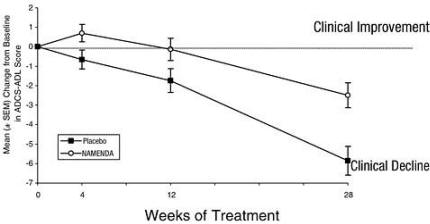
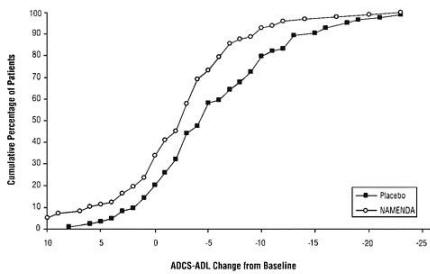
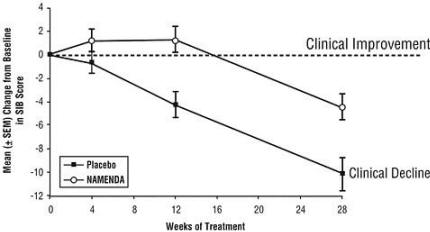
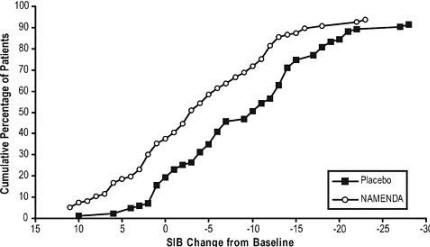
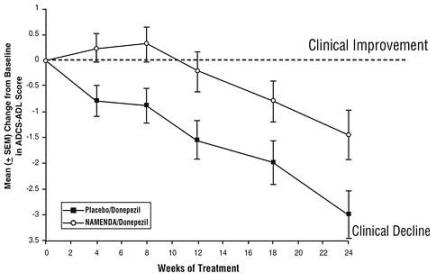
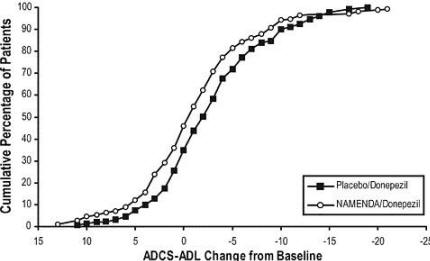
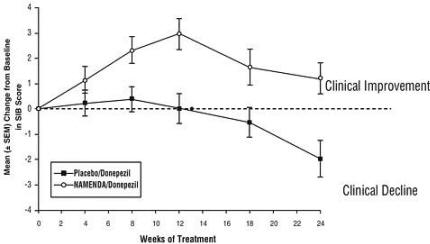
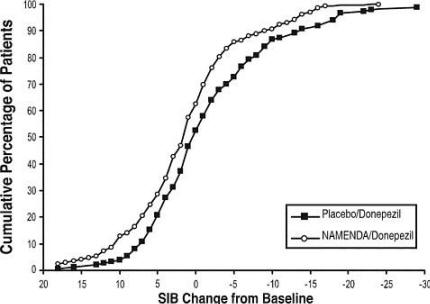
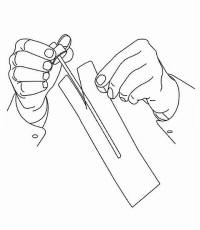
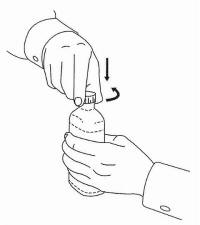
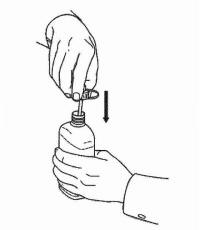
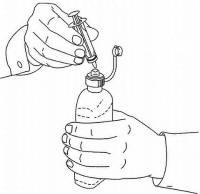
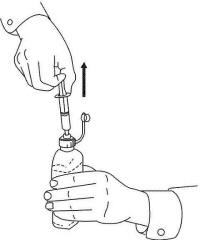
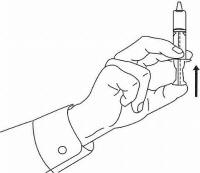
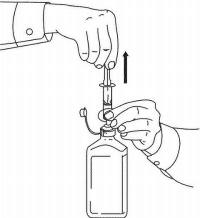
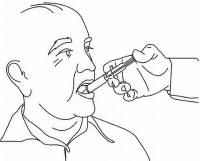
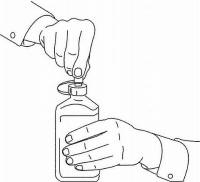

 The parents' own attitudes and behaviors around eating, food, and body appearance can also serve to prevent eating disorders in children. Many children today witness dieting, compulsive exercise, body dissatisfaction and hatred modeled by parents. Also, well-meaning parents often express concern when children show natural gusto for eating fun or high-fat foods, or when they go through perfectly natural stages that involve some chubbiness. Parents ideally should model a healthy approach toward eating: eating, for the most part, nutritious foods (and not in a sparse or constantly diet-like manner); and fully enjoying occasional treats and social events that involve food. They should model a healthy cynicism toward media images of impossibly thin people and acceptance of a full range of body types. This is challenging, given how much we all are pulled these days by powerful media and outside pressures to be sizes we cannot comfortably be. I suggest families rent Slim Hopes: Advertising & the Obsession with Thinness (Media Education Foundation, 1995, 30 minutes), an excellent and powerful video by media expert Jean Kilbourne. Watch it together and talk about it; this is a useful exercise for boy as well as girl children and their parents, and probably merits repeating as children grow and develop.
The parents' own attitudes and behaviors around eating, food, and body appearance can also serve to prevent eating disorders in children. Many children today witness dieting, compulsive exercise, body dissatisfaction and hatred modeled by parents. Also, well-meaning parents often express concern when children show natural gusto for eating fun or high-fat foods, or when they go through perfectly natural stages that involve some chubbiness. Parents ideally should model a healthy approach toward eating: eating, for the most part, nutritious foods (and not in a sparse or constantly diet-like manner); and fully enjoying occasional treats and social events that involve food. They should model a healthy cynicism toward media images of impossibly thin people and acceptance of a full range of body types. This is challenging, given how much we all are pulled these days by powerful media and outside pressures to be sizes we cannot comfortably be. I suggest families rent Slim Hopes: Advertising & the Obsession with Thinness (Media Education Foundation, 1995, 30 minutes), an excellent and powerful video by media expert Jean Kilbourne. Watch it together and talk about it; this is a useful exercise for boy as well as girl children and their parents, and probably merits repeating as children grow and develop.
 Marcus et al. (1996) evaluated sixty-seven individuals diagnosed with PTSD in a controlled study funded by Kaiser Permanente Hospital. EMDR was found superior to standard Kaiser Care which consisted of combinations of individual, and group therapy, as well as medication. An independent evaluator assessed participants on the basis of the Symptom Checklist-90, Beck Depression Inventory, Impact of Event Scale, Modified PTSD Scale, Spielberger State-Trait Anxiety Inventory, and SUD.
Marcus et al. (1996) evaluated sixty-seven individuals diagnosed with PTSD in a controlled study funded by Kaiser Permanente Hospital. EMDR was found superior to standard Kaiser Care which consisted of combinations of individual, and group therapy, as well as medication. An independent evaluator assessed participants on the basis of the Symptom Checklist-90, Beck Depression Inventory, Impact of Event Scale, Modified PTSD Scale, Spielberger State-Trait Anxiety Inventory, and SUD.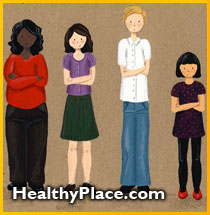 Fatness has traditionally been a greater preoccupation in western societies than in third world countries. Women living in third world countries appear much more content, comfortable and accepted with fuller body shapes. In fact the cultural stereotype of attractiveness within these societies includes a fuller figure. Studies have been done observing women from these societies acculturating into areas in which there is a greater preoccupation on thinness and the results appear disheartening. One study by Furnham & Alibhai (1983) observed Kenyan immigrants who resided in Britain for only four years. These women began adopting the British viewpoint desiring a smaller physique unlike their African peers. Another study by Pumariege (1986) looked at Hispanic women acculturating into a Western society finding that they began adopting the more stringent eating attitudes of the prevailing culture within the same time frame as the previous study (Stice, Schupak-Neuberg, Shaw & Stein, 1994; Wiseman, 1992).
Fatness has traditionally been a greater preoccupation in western societies than in third world countries. Women living in third world countries appear much more content, comfortable and accepted with fuller body shapes. In fact the cultural stereotype of attractiveness within these societies includes a fuller figure. Studies have been done observing women from these societies acculturating into areas in which there is a greater preoccupation on thinness and the results appear disheartening. One study by Furnham & Alibhai (1983) observed Kenyan immigrants who resided in Britain for only four years. These women began adopting the British viewpoint desiring a smaller physique unlike their African peers. Another study by Pumariege (1986) looked at Hispanic women acculturating into a Western society finding that they began adopting the more stringent eating attitudes of the prevailing culture within the same time frame as the previous study (Stice, Schupak-Neuberg, Shaw & Stein, 1994; Wiseman, 1992). Middle-aged women as well as children can also develop eating disorders. For the most part the development of these disorders appears linked to the cultural standards. A study by Rodin (1985) states that in women over the age of 62 the second greatest concern for them are changes in their body weight. Another study by Sontag (1972) focuses on the "double standard of aging" and reveals how aging women in Western society consider themselves less attractive or desirable and become fixated on their bodies. The scariest statistics of all are those surrounding 8-13 year old girls. Children as young as 5 have expressed concerns about their body image (Feldman et al., 1988; Terwilliger, 1987). Children have also been found to have negative attitudes regarding obese individuals (Harris & Smith, 1982; Strauss, Smith, Frame & Forehand, 1985), dislike an obese body build (Kirkpatrick & Sanders, 1978; Lerner & Gellert, 1969; Stager & Burke, 1982), express a fear of becoming obese (Feldman et al., 1988; Stein, 1986; Terwilliger, 1987), and do not like to play with fat children (Strauss et al., 1985).
Middle-aged women as well as children can also develop eating disorders. For the most part the development of these disorders appears linked to the cultural standards. A study by Rodin (1985) states that in women over the age of 62 the second greatest concern for them are changes in their body weight. Another study by Sontag (1972) focuses on the "double standard of aging" and reveals how aging women in Western society consider themselves less attractive or desirable and become fixated on their bodies. The scariest statistics of all are those surrounding 8-13 year old girls. Children as young as 5 have expressed concerns about their body image (Feldman et al., 1988; Terwilliger, 1987). Children have also been found to have negative attitudes regarding obese individuals (Harris & Smith, 1982; Strauss, Smith, Frame & Forehand, 1985), dislike an obese body build (Kirkpatrick & Sanders, 1978; Lerner & Gellert, 1969; Stager & Burke, 1982), express a fear of becoming obese (Feldman et al., 1988; Stein, 1986; Terwilliger, 1987), and do not like to play with fat children (Strauss et al., 1985).